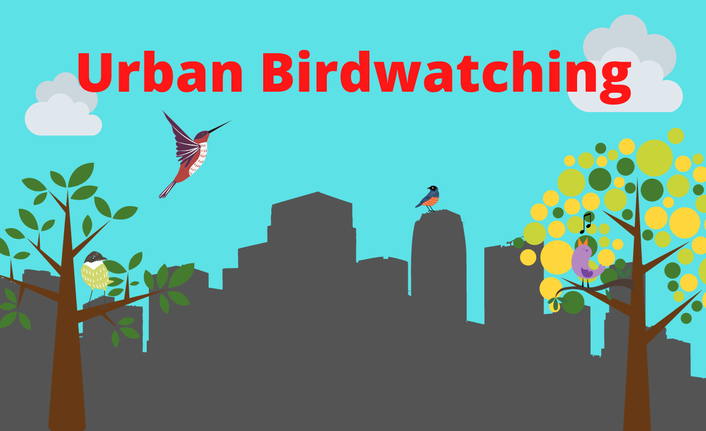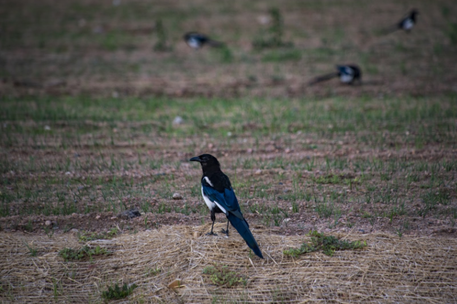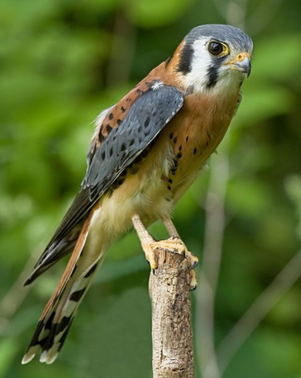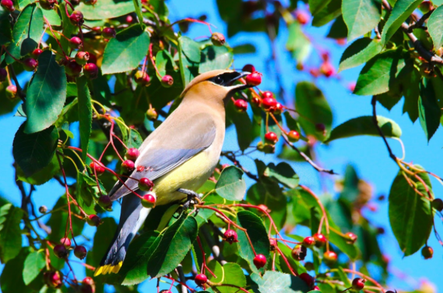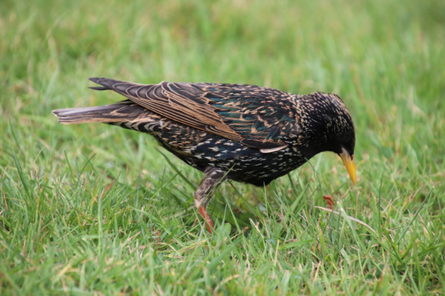|
by Stephanie H., Sprague Branch I know that many people think bird watching is a hobby only for the elderly, but I have found that it has given me a better appreciation for the natural environment here in Salt Lake City. I also feel more attuned to the changes in the seasons, since Utah is a hotspot for bird migration. You do not have to wake up at sunrise, or travel to the mountains to do bird watching, just taking walks around your neighborhood can be an opportunity to see a huge variety of bird species. Here are a few birds you will probably spot: The Black-billed Magpie (Pica hudsonia) belongs to the Corvidae family along with crows and ravens, which means they are incredibly intelligent. Corvids have shown the ability to create tools and recognize different human faces. They have black heads, white chests and blue-black wings and live in SLC year-round. The American Kestrel (Falco sparverius) is a small Falcon. It is not uncommon to see it perched on fences or wires on the roadside, I once saw one perched on a freeway overpass. One of their favorite foods is grasshoppers, something that we have plenty of here in Salt Lake. They build nests in cavities of trees, so if you have some large trees in your neighborhood, you probably have a kestrel living nearby. Since our winters are not as harsh as in the East, kestrels stay here year-round. Unlike magpies and kestrels, Cedar Waxwings (Bombycilla cedorum) migrate to Utah in the winter. You can usually spot them in trees that have berries on them, they often get drunk off of the older berries on the trees. Cedar waxwings have a tan body with a black eye mask, and red wing tips. Waxwings always travel in large flocks, so instead of spotting one waxwing, you will probably spot a huge group of them. European Starlings (Sturnus vulgaris) are one of the most common birds I see around SLC. Unfortunately, starlings are not native to North America, they were brought over from Europe to New York in the late 1800’s. Since then starlings have spread across the entire continent, they are what is known as an invasive species meaning they displace native bird populations. They are a sobering example of the destruction our actions can have on the environment. Starlings have a black body with light brown or white spots. You will see them congregating on power lines in the hundreds. These are only a few examples of the huge variety of birds you can spot in our city. I highly encourage you to download the free app from the Audubon Society that can help you identify birds on the spot. You can also go to the Audubon website at audubon.org for more information about birds, conservation and climate change. You can also check out the Salt Lake Audubon Society, and get involved with bird counts which help scientists track bird populations.
0 Comments
|
AuthorsBlog posts are written by our Teen Librarians and, in some cases, teens like you. Visit your About page to learn more about our Teen Librarians. Archives
August 2023
Categories
All
|
